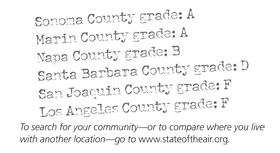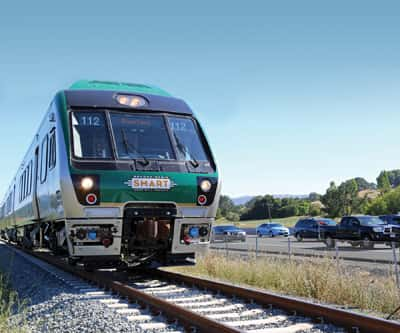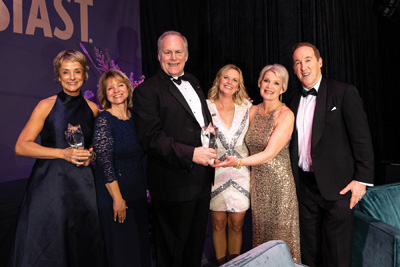What’s the State of Your Air?
For 15 years, the American Lung Association has analyzed data from air quality monitors to compile its State of the Air report. Its 15th annual report finds that nearly 50 percent of Americans live in counties with unhealthy air. In California, that number rises to a staggering 77 percent of the population (nearly 30 million people); our state also houses the top five most polluted counties in the country for both ozone and particulate matter.
 NorthBay biz checked in on our communities and found Sonoma and Marin counties on the Honor Roll and Napa not far behind. Fact is, counties along the North Coast (from Monterey up to Humboldt) preformed quite well—mostly As and Bs—while Southern and Central California (including some famous winegrape growing areas) have some make-up work to do.
NorthBay biz checked in on our communities and found Sonoma and Marin counties on the Honor Roll and Napa not far behind. Fact is, counties along the North Coast (from Monterey up to Humboldt) preformed quite well—mostly As and Bs—while Southern and Central California (including some famous winegrape growing areas) have some make-up work to do.
Green Giveaway
When the Meritage Resort and Spa in Napa recently renovated 157 rooms in its main building, it was faced with a choice: send a giant load of no-longer-needed furnishings to landfill or find a way to repurpose them. It chose the latter, donating doors, desks, chairs, lamps, flat-screen televisions, bedframes and sofas to Solano-Napa Habitat for Humanity (to sell at its ReStore retail outlet) and St. John the Baptist Second Hand Shop in Napa. Another example of how a simple choice can make a big difference.
Food and Water
 Marin County is home to a unique public-private partnership, called the Food-to-Energy (F2E) program, that’s playing a role in the county’s drive toward zero waste by 2025. In brief, Marin Sanitary Service (MSS) collects food scraps from local restaurants, supermarkets and other food-related businesses, sorts it to ensure there’s no non-food contamination (from utensils, containers and the like), then transports it to the Central Marin Sanitation Agency (CMSA) for conversion into renewable energy.
Marin County is home to a unique public-private partnership, called the Food-to-Energy (F2E) program, that’s playing a role in the county’s drive toward zero waste by 2025. In brief, Marin Sanitary Service (MSS) collects food scraps from local restaurants, supermarkets and other food-related businesses, sorts it to ensure there’s no non-food contamination (from utensils, containers and the like), then transports it to the Central Marin Sanitation Agency (CMSA) for conversion into renewable energy.
Once there, the food is mixed with fats, oils and grease from restaurants and other commercial sources, then the mixture is pumped into anaerobic digesters. Microorganisms transform the mix into a methane biofuel (and a biosolids byproduct that is used at different times of the year for landfill cover at the Redwood Landfill and a soil amendment and fertilizer). The biomethane is filtered and run through an engine-generator at CMSA used to power its daily operations.
By inserting MSS into the process, CMSA can count on an uncontaminated supply of scraps (contamination can complicate processing or force the system to be temporarily taken offline).
Food waste is the largest single source of waste in California, making up more than 25 percent of the residential waste stream and 16 percent of the commercial waste stream. For now, about 20 tons of food scraps per week from 35 businesses are being diverted from landfill and used to generate renewable energy for the wastewater treatment plant. As more businesses add this service, the F2E program will advance Marin County towards its zero waste goal.
Restaurants, food stores and caterers interested in joining Marin F2E can contact Chance Shelley at (415) 458-5530 for more information.



